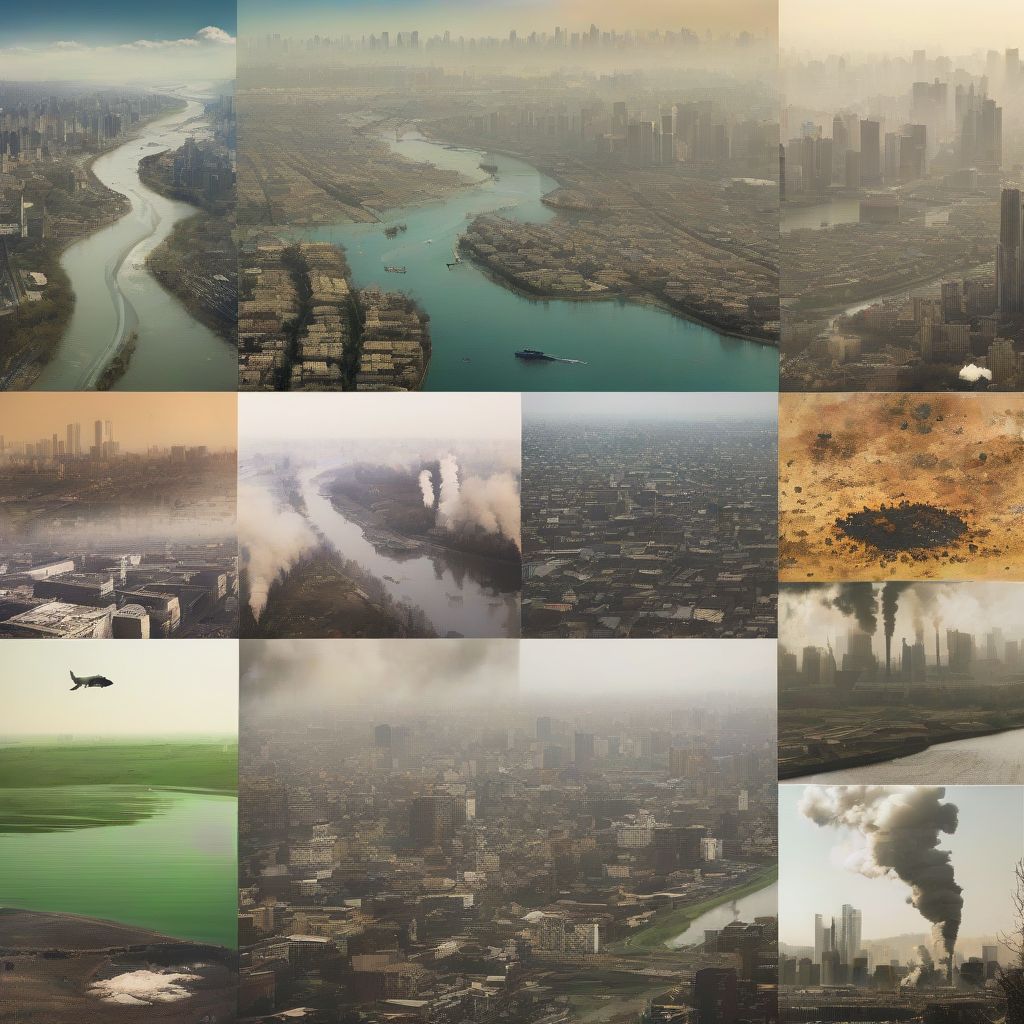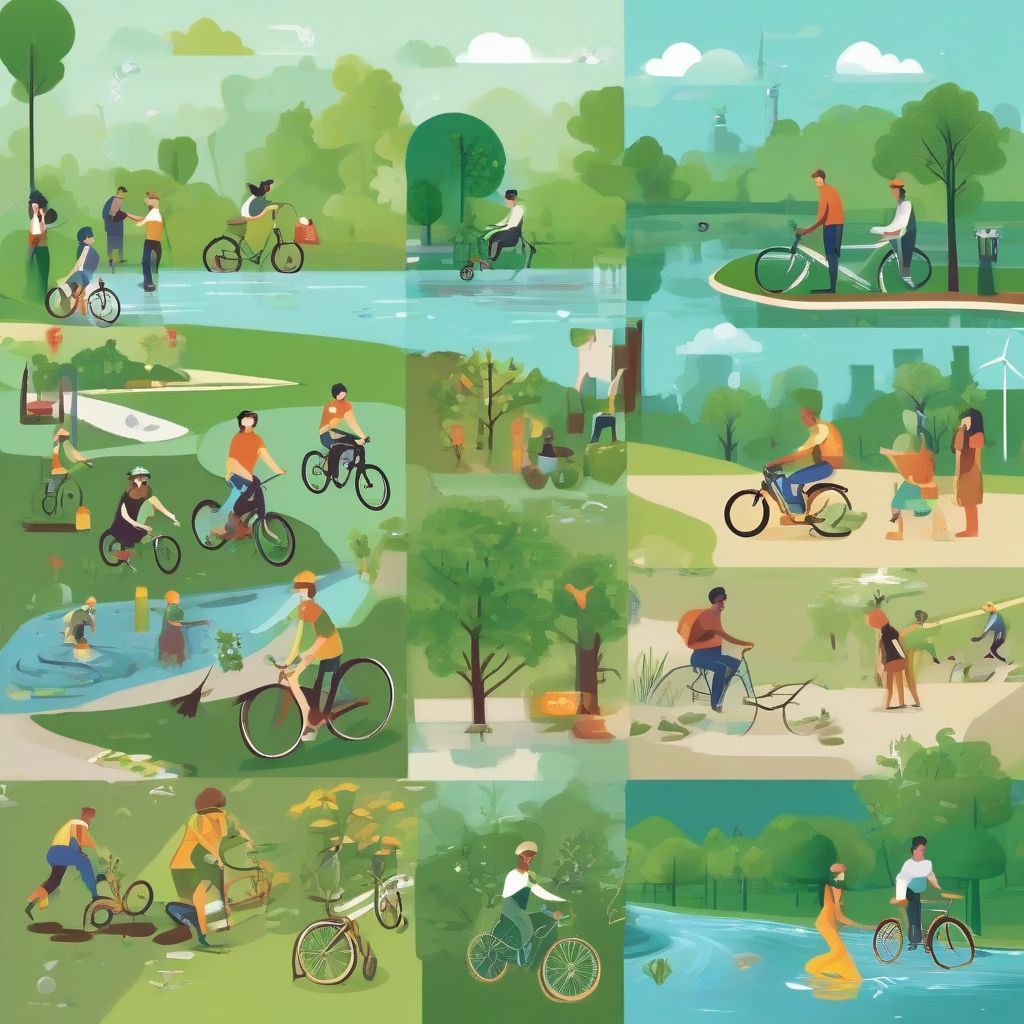Imagine a world shrouded in a perpetual haze, where the air stings your nostrils, the water tastes metallic, and the once-vibrant ecosystems are choked with waste. This isn’t a dystopian future; it’s the stark reality of pollution, an invisible threat silently wreaking havoc on our planet and our health.
As a nutritionist and meal prep coach, I’m passionate about helping people lead healthier lives. But true well-being extends beyond our plates. It’s inextricably linked to the health of our environment, a delicate balance that pollution disrupts with alarming consequences.
The Insidious Grip of Pollution on Ecosystems
Pollution, in its various forms – air, water, soil, and noise – acts like a poison, slowly degrading the intricate web of life that sustains our planet. Let’s delve into how each type of pollution impacts ecosystems:
Air Pollution: Choking the Atmosphere
From the belching smokestacks of factories to the exhaust fumes of our vehicles, air pollution releases a cocktail of harmful gases and particulate matter into the atmosphere. These pollutants not only trigger respiratory problems in humans but also:
- Acid Rain: Sulfur dioxide and nitrogen oxides react with water vapor to form acid rain, which acidifies lakes and streams, decimating aquatic life and damaging forests.
- Climate Change: Greenhouse gases like carbon dioxide trap heat in the atmosphere, leading to rising global temperatures, extreme weather events, and disruptions in natural cycles.
- Ozone Depletion: Chemicals like chlorofluorocarbons (CFCs) deplete the ozone layer, our planet’s natural sunscreen, allowing harmful ultraviolet radiation to reach the Earth’s surface, harming plants and animals.
Water Pollution: Poisoning the Life Source
The sight of plastic-choked rivers or oil-slicked oceans is a grim testament to the extent of water pollution. Industrial waste, agricultural runoff, sewage, and plastic debris contaminate our water sources, leading to:
- Eutrophication: Excess nutrients from fertilizers cause algal blooms, depleting oxygen in water bodies, creating “dead zones” where aquatic life cannot survive.
- Biomagnification: Toxic chemicals like mercury accumulate in organisms at higher levels of the food chain, posing significant threats to predators, including humans.
- Disruption of Aquatic Ecosystems: Pollution alters water pH, temperature, and oxygen levels, disrupting delicate aquatic ecosystems and threatening the survival of numerous species.
Soil Contamination: Poisoning the Ground We Stand On
Improper disposal of industrial waste, mining activities, and excessive pesticide use contaminate the soil, impacting its fertility and ability to support life. This leads to:
- Reduced Crop Yields: Contaminated soil yields fewer and less nutritious crops, impacting food security and potentially exposing humans to harmful chemicals.
- Groundwater Contamination: Pollutants leach into groundwater, contaminating a vital source of drinking water for humans and animals.
- Habitat Degradation: Soil pollution degrades habitats, making it difficult for plants and animals to thrive, leading to biodiversity loss.
Noise Pollution: The Invisible Assault
While not always perceived as a significant threat, noise pollution from traffic, construction, and industrial activities disrupts natural soundscapes, with significant impacts on wildlife:
- Communication Interference: Noise pollution interferes with the ability of animals to communicate, find mates, and detect predators.
- Stress and Behavioral Changes: Prolonged exposure to noise pollution can cause stress, disorientation, and behavioral changes in animals, impacting their survival and reproduction.
- Habitat Displacement: Animals sensitive to noise may abandon their habitats in search of quieter areas, disrupting ecosystems and increasing competition for resources.
 The Devastating Impact of Pollution on Ecosystems
The Devastating Impact of Pollution on Ecosystems
The Unseen Toll on Human Health
The impact of pollution on ecosystems ultimately circles back to us. As we depend on these ecosystems for clean air, water, and food, their degradation poses significant threats to human health:
Respiratory Illnesses: Struggling for Every Breath
Air pollution is a major contributor to respiratory illnesses like asthma, bronchitis, and lung cancer. Fine particulate matter penetrates deep into our lungs, causing inflammation and respiratory distress. Children, the elderly, and those with pre-existing respiratory conditions are particularly vulnerable.
Waterborne Diseases: A Silent Threat
Contaminated water is a breeding ground for waterborne diseases like cholera, typhoid, and dysentery. These diseases spread through the consumption of contaminated water or contact with it, leading to severe health issues, especially in developing countries with limited access to safe drinking water.
Food Contamination: A Hidden Danger
Pollution makes its way into our food chain, posing risks to our health. Heavy metals like mercury accumulate in fish, pesticides contaminate crops, and plastic particles are found in our food and water. These contaminants can accumulate in our bodies, leading to long-term health problems, including organ damage, hormonal imbalances, and even cancer.
Mental Health Impacts: The Unseen Burden
Beyond physical health, pollution also takes a toll on mental well-being. Studies have linked noise pollution to stress, anxiety, sleep disturbances, and cognitive impairment. Living in polluted environments can contribute to feelings of helplessness, anger, and eco-anxiety, especially among younger generations.
Turning the Tide: Towards a Healthier Future
The interconnectedness of environmental and human health is undeniable. Protecting our planet is not just an altruistic endeavor; it’s crucial for our survival and well-being. So, what can we do to turn the tide against pollution?
- Transition to Clean Energy: Shifting from fossil fuels to renewable energy sources like solar, wind, and hydropower is crucial to reduce air pollution and mitigate climate change.
- Sustainable Agriculture Practices: Implementing sustainable agricultural practices like organic farming, crop rotation, and responsible pesticide use can minimize soil and water contamination.
- Reduce, Reuse, Recycle: Embracing the 3Rs – reducing waste, reusing products, and recycling materials – can significantly decrease the amount of waste ending up in landfills and polluting our environment.
- Support Sustainable Businesses and Policies: Choosing to support businesses committed to sustainable practices and advocating for stricter environmental regulations can drive systemic change.
Our Health, Our Responsibility
The fight against pollution is not just a battle for our planet’s future; it’s a fight for our own health and well-being. By making conscious choices in our daily lives, supporting sustainable practices, and raising awareness about the interconnectedness of environmental and human health, we can create a healthier, more sustainable future for ourselves and generations to come.
While I navigate the world of nutrition and help individuals achieve their health goals, I urge everyone to recognize the broader context – a healthy body thrives in a healthy environment. Let’s join hands to heal our planet and secure a healthier future for all. Share your thoughts and actions in the comments below, and let’s inspire each other to be the change we want to see in the world.
For more insights on the impact of climate change and how it affects our world, explore our latest research on climate change and its effects: [link to https://sciencenewsdigest.com/latest-research-on-climate-change-and-its-effects/]
If you’re interested in understanding the role of oceanography in environmental research, check out this informative article: [link to https://sciencenewsdigest.com/how-oceanography-is-contributing-to-environmental-research/]
 Sustainable Practices for a Cleaner Future
Sustainable Practices for a Cleaner Future
[amazon bestseller=”pollution solution”]
